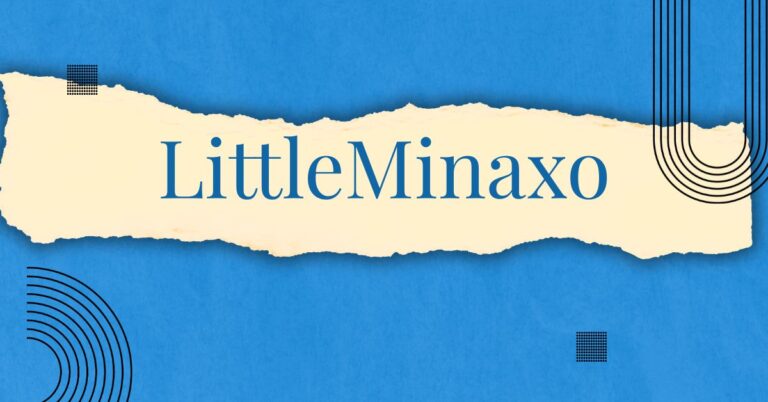Holisticke: A Modern Path to Mind, Body, and Spirit Wellness
The pursuit of equilibrium is more important than ever in today’s hectic and stressful environment. A lot of people are trying to find ways to be healthy that don’t only target their bodies, but also their minds and spirits. Holisticke is a new way of thinking about health that takes a holistic view and invites you to join them on their path to wholeness. A new perspective on holistic self-care is offered by this unique paradigm, which combines traditional knowledge with modern techniques.
Envision yourself feeling grounded, energised, and completely in sync with your emotional, mental, and physical requirements as you begin each day. The tenets of Holisticke push us to consider this option by questioning established medical practices. Holisticke proposes that the key to long-term health is a focus on interconnections rather than isolated symptoms or diseases.
Are you ready to dive into this holistic revolution? Let’s uncover what makes Holisticke so transformative and how it can reshape your understanding of personal health!
Rediscover hidden gems — let creativity flow!
What is Holisticke?
A holistic approach to health is one that recognizes the unity of soul, body, and mind. It acknowledges that mental, emotional, and spiritual wellness are all components of total health.
All parts of oneself should be investigated, according to this ideology. Holisticke promotes true healing and balance by emphasizing on harmony among all aspects of life.
Many practitioners use a wide variety of approaches, including energy work, nutrition counseling, and meditation. A more complete sense of self is the goal of these methods.
The aim is not just to be healthy, but to flourish in all aspects of life. This all-encompassing perspective encourages individuals to be proactive in their own recovery process and to build resilience as they go.
Essentially, Holisticke encourages everyone to find their own way to wholeness by recognizing and meeting their own specific experiences and needs.
Core Principles and Practices of Holisticke
| Aspect | Description |
|---|---|
| Core Philosophy | Integration of mind, body, and spirit for total wellness |
| Goal | Achieving balance, resilience, and self-awareness |
| Primary Focus | Prevention, mindfulness, and personal growth |
| Key Practices | Meditation, nutrition, yoga, energy healing |
| Outcome | Enhanced mental clarity, reduced stress, holistic health |
| Scientific Support | Studies validate benefits of mindfulness and integrative therapies |
The Origins and Principles of Holisticke
Integrative medicine (Holismke) developed out of a complex web of traditional medical practices. The ideologies that acknowledge the unity of soul, body, and mind are its ancestors.
The foundation for holistic treatments was created by Eastern disciplines such as Ayurveda and Traditional Chinese Medicine. They helped people see that health is much more than just feeling well physically by stressing the importance of harmony and balance.
Fundamental guidelines A holistic approach: customization, prevention, and integration. The emphasis is on taking care of the complete individual, not just their symptoms. The path to wellness is unique to each person.
Integral to Holisticke is the promotion of introspection and present moment awareness. When people learn to pay attention to what they need, they take an active role in their own recovery. That way, they may make educated decisions about their way of life.
Nutrition, movement therapy, meditation, and other complementary practices are all part of the holistic approach to health that this ideology promotes. This allows for the development of individualized wellness programs that are both effective and sustainable.
How Holisticke Differs from Traditional Medicine
Holisticke takes a very different tack than conventional medicine when it comes to health. Holistic medicine aims to identify and treat the underlying causes of illness, as opposed to the symptoms that traditional medicine tends to treat.
Diagnosis and therapy are the main focuses of conventional medicine. As short-term solutions, it frequently depends on medications or surgical procedures. Holisticke, on the other hand, stresses the need of attending to one’s psychological, spiritual, and emotional health in addition to one’s bodily health.
In addition, Holisticke advocates for individualized treatment plans that take into account individuals’ past, present, and future circumstances. This approach promotes more than just transactional contacts; it strengthens the bond between practitioner and patient, allowing for continuous support.
Also, Holisticke is all for proactive steps to keep things balanced in the long run, even though traditional approaches might fail to do so at times. In order to achieve long-term healing and personal development throughout life, it is essential to change one’s viewpoint.
The Benefits of a Holistic Approach to Wellness
A holistic perspective on health acknowledges the interdependence of the psychological, physiological, and spiritual components. A more harmonious and balanced existence is the result of this synergy.
Reducing stress is one of the main advantages. Individuals typically discover more efficient strategies to handle their pressures when they treat their emotional health alongside their physical health.
An individual’s level of self-awareness can be improved. Mindfulness practices promote introspection and emotional intelligence. Better decision-making and personal development can result from this realization.
In addition, holistic approaches frequently encourage better lifestyle choices. People may start eating more whole foods that nourish their bodies and spirits, and they may start moving more freely because it makes them happy, not because it’s required.
Reducing anxiety and increasing mental clarity are two other ways this method might improve immune function. A more fulfilling existence is possible when one’s physical, mental, and social well-being are all supported in tandem.
Incorporating Holistic Practices in Daily Life
It is possible to make profound changes with little effort by integrating holistic activities into one’s routine. Practice mindfulness first thing in the morning. If you want to start your day off on the right foot, try some deep breathing exercises or meditation.
A holistic lifestyle is incomplete without proper nutrition. Choose healthy meals that are rich in nutrients and will help your body and mind. When you make your own food at home, you can really taste the ingredients and savor every bite.
Physical motion is also crucial. Discover things that bring you joy and include them into your daily regimen, whether it’s yoga, dancing, or simply going for a quick stroll outdoors.
Also, make time to interact with nature; being outside is a great way to recharge your soul. Also, have a notebook where you may write down your ideas and feelings; doing so might help you become more self-aware.
Strive to surround yourself with positive influences. Find individuals that will inspire you to grow and find balance in all areas of your life and surround yourself with them.
Common Misconceptions About Holisticke
Despite its growing popularity, several myths surround Holisticke:
| Myth | Reality |
|---|---|
| It replaces medical care | It complements traditional medicine by addressing root causes. |
| It’s not scientifically supported | Studies confirm benefits of mindfulness, yoga, and integrative therapies. |
| It’s only for spiritual people | Holisticke is inclusive, focusing on individual balance and well-being. |
| It requires drastic lifestyle change | Even small steps can lead to big transformations. |
Conclusion
Embracing a more holistic way of living can lead to significant changes. All parts of your existence, mental, physical, and spiritual, are invited to be nurtured.
Along this path, you will meet new people and learn more about yourself. There is a chance for development with every decision.
Envision yourself feeling energetic and balanced every morning when you get up. Integrating holistic methods allows you to address the root cause of your health issues rather than only alleviating their symptoms.
Your everyday life can be improved by spending time in nature, practicing mindfulness, or investigating alternative remedies.
You may discover that you are more able to handle adversity if you apply these concepts to your life. You could see a dramatic improvement in your general standard of living.
Each individual must find their own way to complete health and wellness. Let the grace of harmony lead you to long-term wellness and contentment; embrace it wholeheartedly.
Find more inspiring reads that ignite imagination.
FAQS
What is Holisticke?
Integrating one’s mental, physical, and spiritual health is the current goal of Holisticke, a term used to describe this approach. By taking the time to learn about each person’s unique requirements, it promotes harmony and healing.
How does Holisticke differ from traditional medicine?
The primary goal of conventional medical practice is the alleviation of individual symptoms. On the other hand, Holisticke takes a more holistic approach to health promotion by looking at the interdependence of mental, physical, emotional, and spiritual health.
Can anyone practice Holisticke methods?
Sure thing! No matter your history or present health, anybody may benefit from embracing holistic approaches. Over time, even little adjustments might provide big results.
What are some common holistic practices I can try at home?
Practices like deep breathing, yoga for physical movement, and mindfulness meditation could be good places to start. Diet has an important impact as well; think about eating more whole foods.
Is there scientific support for holistic approaches to wellness?
Of course! Holistic approaches, such as mindfulness-based stress reduction or the use of integrative therapies in conjunction with traditional therapy, are gaining more and more scientific backing.







